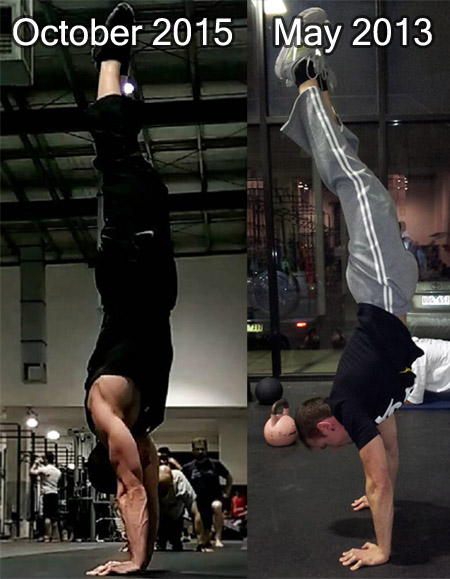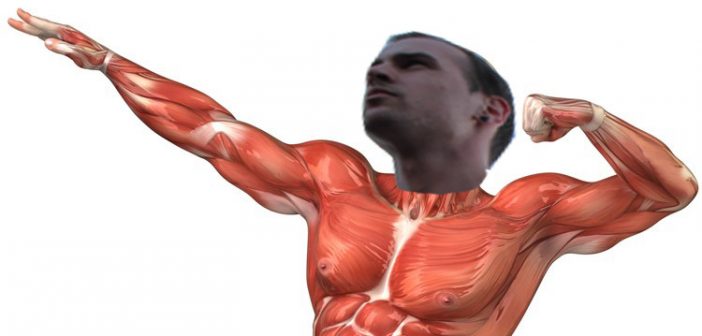Don’t like injuries? Yeah, neither do I. But riddle me this; why do an overwhelming majority of people reactively respond to an injury? By this point, it’s too late. The damage is done and you’re left ruing that embarking on a bitterly mind numbing journey of rehabilitation is necessitated by your lack of physical due diligence.
Sometimes, though, the unavoidable can happen where no matter how much preparation you’ve put yourself through, disaster strikes. We’ll put this down to bad luck or wrong place at the wrong time.
Misfortune and extenuating circumstances aside, what if I offered you a starting point that you can integrate into your life to proactively prevent injury?
I could offer a list of options, but I find this increases the chance of paralysis analysis. A greater number of options equates to a lessened likelihood of you following through.
Now that I’ve got your attention, I’d like to introduce to you a new term.
Prehabilitation.
In short, this involves actions you can take to prevent injuries before they occur.
I like to think of it as the opposite of rehabilitation; a term we’re all very familiar with.
The former is proactive, and the latter is reactive.
One form of prehabilitation I’d like to talk about is remedial massage.
Before I get started, I’d like to make it clear that remedial massage alone is not the solution to injury prevention. Absolutely not. It’s merely a single piece to your prehabilitation puzzle, which also includes regular mobility work, adequate sleep and a balanced diet.
However, our prehabilitation journey must begin with a first step. For those who consider themselves “too lazy” to regularly mobilize and have chronic tightness throughout the body, this is a legitimate starting point and worth experimenting with if you haven’t tried it before.
Why Remedial Massage?
Ah, massage. Often rife with sketchy pseudoscience and claims such as spiritual healing and detoxification, it can be hard to navigate through the minefield of woo woo especially when it’s something you wish to take a serious look at.
This is why I wish to focus specifically on remedial massage. From my experience, you point out which areas of your body are tight, sore or limited in range of motion to the remedial massage therapist and those areas will be targeted throughout the session.
You receive bonus points if you do your homework and familiarize yourself with the human anatomy, especially the back as you’ll be lying face-down in most cases. This eliminates any guesswork for the practitioner and ensures the correct areas are targeted.
I should also point out that a remedial massage therapist is not allowed to formally prescribe prehabilitation exercise(s) to a patient. If massage and prehabilitation exercise discussion is something you want, you’re advised to visit a physiotherapist or myotherapist.
Usually reserved for the likes of athletes and those involved heavily in sports, remedial massage has a role to play in injury prevention. I’m going to openly challenge the athlete and sportsperson preconception right now and ask everyone a question:
Why don’t we all integrate recurring remedial massage appointments into our prehabilitation routine?
Let me first make quick distinction between the most common type of massage; a regular/relaxation massage and a remedial massage.
A regular massage is what you’ve probably received while on holiday. The gentle, reassuring touch of a qualified masseuse (or masseur) in a room decorated with scented candles, downlighting and music that was lovingly recorded in the middle of a rainforest. This feels great at the time and you even walk away feeling like you’re floating on air.
A remedial massage on the other hand is something you would likely opt against on a holiday. To be honest, I wouldn’t blame you. This style of massage is typically targeted at points of acute muscle tension with the goal of increasing range of motion through various parts of your body. This, in turn, introduces more freedom in your movement and exercising becomes less physically laborious.
Now, if I was a sales rep attempting to sell the idea of remedial massage to you, I’ll have done a pretty poor job convincing you of its benefits from that last paragraph. It’s now that I’m going to be real with you. It hurts, you’re going to be uncomfortable, and you may even begin to tear up.
But it’s super effective.
The effect of a regular massage quickly wears off, and your existing aches, pains and chronic tightness make a prompt return. In other words, it’s a short-term gain with minimal long-term benefit. It’s also, on average, more expensive than a remedial massage.
I view a remedial massage as a short-term loss (in terms of what you’ll have to endure, depending on your threshold for discomfort) for a noticeable long-term gain.
Putting it financially, there is a definite return on investment (ROI) with remedial massage. Costing less than a typical night out, you’re likely to spend comparable money when simply purchasing the first round of drinks for your friends and bending over to exorbitant club entry fees.
One route leaves you feeling limber, free, physically ready to continue to train hard at the gym and stay comfortable at work. The increased range of motion will add to the likelihood of exercises being performed correctly, reducing the risk of injury due to poor mobility.
A common example is the overhead press, where deficiencies in shoulder range of motion quickly become clear. A bad example of this exercise is here (seen at gyms, I can guarantee, worldwide) and an ideal example is here.
The other leaves you guilt-ridden, perpetually hungover and lethargic if you’re attempting to do anything productive the next morning.
Improved shoulder range of motion from remedial massage and mobility work has had the strongest carryover to my handstand (pictured below) and my thoracic mobility (ability to stay upright) when front squatting.

My handstand over time. The result of focusing on shoulder mobility and introducing remedial massage.
Aside from my anecdotal tales of benefit, claimed benefits of massage include increased blood flow to muscles (which is believed to increase the rate of muscle recovery), reduced inflammation and the promotion of mitochondrial biogenesis (improved respiratory function or “better breathing”).
However, when I remove my rose-colored pro-massage glasses, popular studies (such as the one referenced above) can be closely critiqued and scrutinized. Again, I’m probably shooting myself in the foot, but I wish to urge you not to necessarily believe everything reported in the media and claimed online. Especially in the realm of physical treatment methods that fall under the alternative remedies umbrella.
Alas, the best I can do now is to encourage you to try remedial massage. At the moment, I visit a remedial massage therapist once a fortnight, however I began with once a month a couple of years ago and slowly began to notice its benefits manifest in my training. Even if you’re not training often at the gym, quality of life improvements can be noticed.
Just ask employees at top global companies such as Activision Blizzard, Cisco and PwC where massage is a popular perk for workers who are undoubtedly working long hours at the office.
If you gain benefit from it, thank me later. Otherwise, I commend you for adopting the prehabilitation mindset and seeking out methods to reduce your risk of injury.
I’m interested to hear from you in the comments below. Have you had any experience with remedial massage? Has it been beneficial for you? Would you recommend it?
A reminder that I’m advocating remedial massage as a means of injury prevention. If you’re battling through a debilitating injury, I would recommend seeing your local sports doctor or physiotherapist. Be smart, don’t fight against pain with willpower.
Did you enjoy this post? Receive one weekly update containing knowledge, tips and actionable content delivered straight to you. Strictly no spam.

